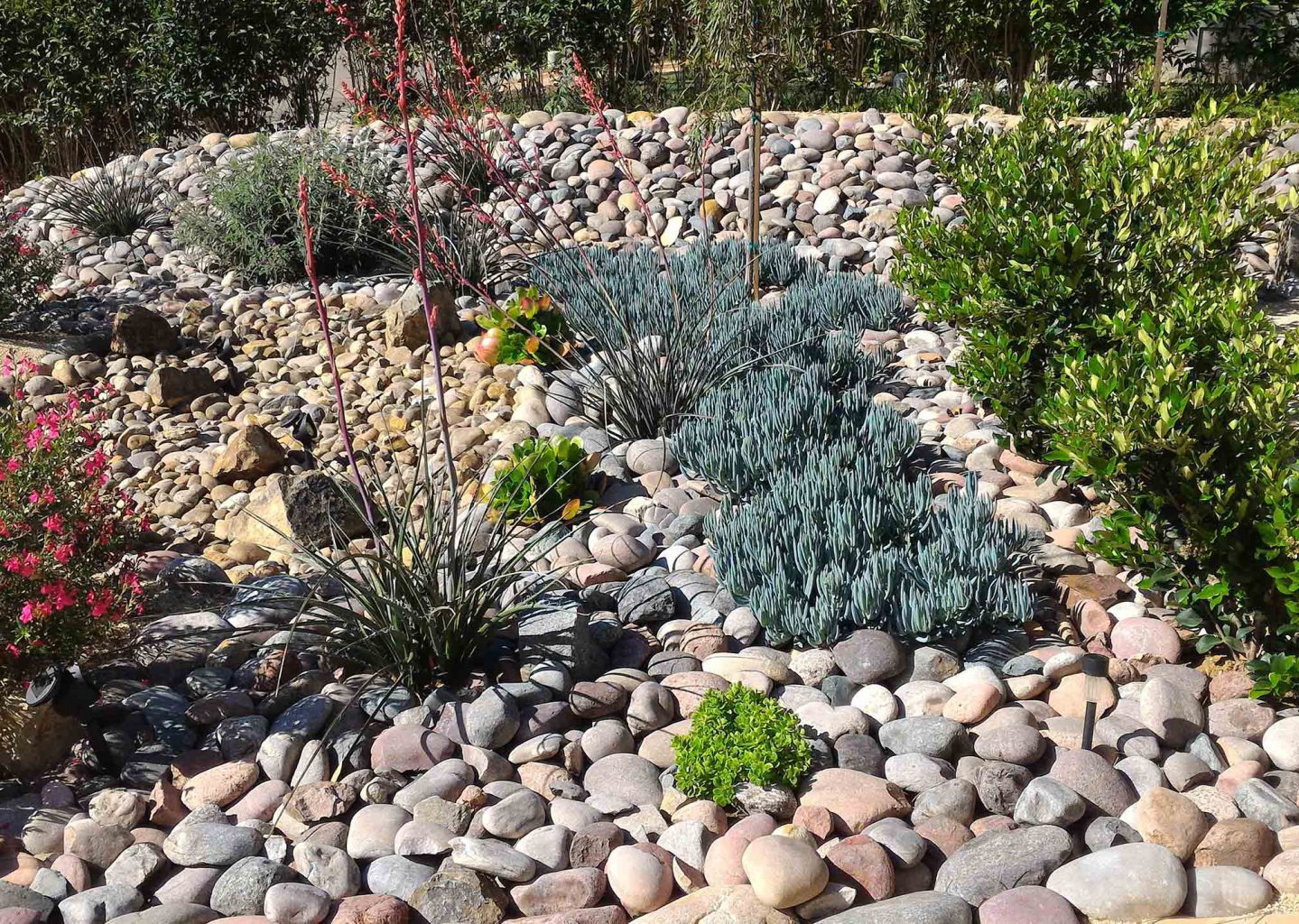By Vicki Spencer, Master Gardener
Given the extreme drought conditions of last summer, January isn’t too early to start planning for another challenging gardening season. To reduce outdoor water usage and see a significant decrease in your summer water bill, try xeriscape gardening when water is scarce. That’s a welcome prospect with high inflation and an added bonus when water conservation is crucial. Although most of us can’t afford a complete landscape overhaul, we can make changes incrementally.
Less lawn means less water usage, so year after year I’ve expanded my drought-tolerant garden beds a little at a time. When grass dies and weeds emerge along the border, I simply remove the weeds, turn the soil and widen the garden area. Sometimes I need to remove healthy grass to give existing plants more room to grow.
I cut the sod into patches (approximately 12-inch square), dig down a couple of inches to get roots, and transplant the squares in the occasional bare spots that emerge after a cold, dry winter.
Other times, I simply need a larger garden bed to accommodate new plants I couldn’t resist buying after looking at garden catalogues over the winter. Regardless of the motivation, my lawn area has consistently decreased in size and my drought-tolerant garden has become more interesting.
It’s always important to consider soil, light and water conditions when planning drought-tolerant gardens. For instance, a corner of my garden (next to the driveway on the south side of the house) gets lots of sunshine and is always dry, regardless of repeated attempts to adjust my drip system.
Weigela, which is a sun-loving plant, would not thrive in such a dry area. It’s much happier in my east-facing garden, while waterwise plants such as Pot of Gold, ice plant, Colorado Gold, sedum and bottlebrush do well in the dry corner. I share hummingbirds’ attraction to the blood-red flowers of Little John Dwarf bottlebrush and am particularly fond of the non-invasive Jewel of Desert Ruby Ice Plant with its high tolerance for poor soils.
These border plants are recognized by Denver Water as “xeriscape” plants, a term the utility coined after imposing water restrictions in the late 1970s. At the time, I realized I had been practicing xeriscape gardening for years, having learned from relatives who suffered the trials of dry land farming and survived the Dust Bowl.
Effective xeriscaping requires that you cluster drought-tolerant plants and trees with greater water needs in one area and those with lesser needs in another and water accordingly.
I used so little water with drought-tolerant plants that I have never entertained Robert Nold’s philosophy of cultivating a completely “dry garden.” Although admirable in concept, the degree of plant loss and associated expense mentioned in his book High and Dry was not palatable to this gardener living on a budget. However, the book is an invaluable resource with extensive descriptions of North America’s drylands plants. Scientific names, photos and plant peculiarities make choosing the best drought-resistant plants for your own conditions much easier.
Gardener Vicki Spencer has an eclectic background in conservation, water, natural resources and more.

